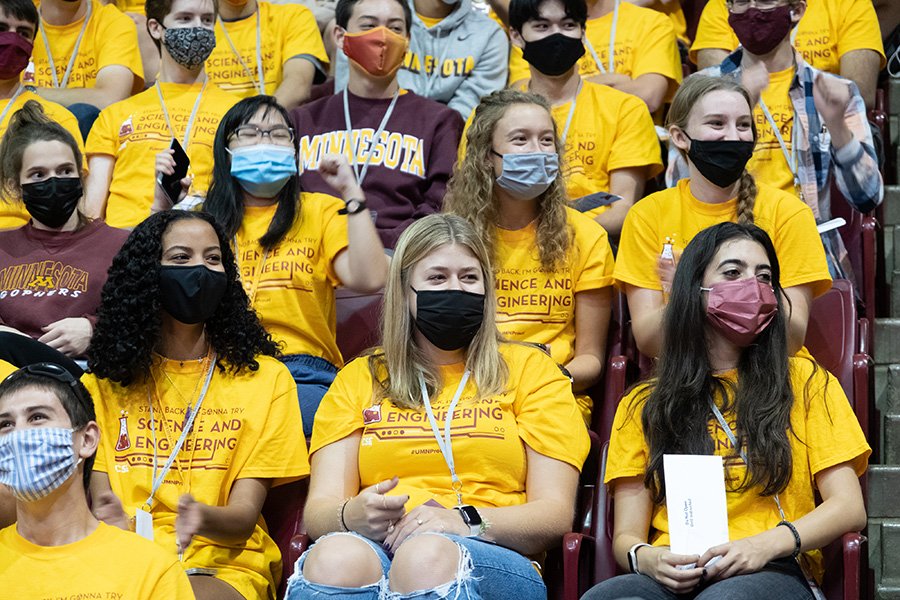College exceeds three-year enrollment growth plan

CSE freshman class includes the highest number of women and students of color
MINNEAPOLIS / ST. PAUL (11/01/2021)—The University of Minnesota College of Science and Engineering (CSE) enrolled 1,453 freshmen this fall—a 26 percent increase from 2018—despite an ongoing pandemic. Among them were 422 students of color, an increase of 80 percent from Fall 2018, and 452 women, the highest number in CSE history.
This rising trend is the result of a proactive approach the college is taking to attract the best and brightest STEM leaders.
In early 2019, the college announced a plan to increase its freshman enrollment by 100 each year for three years, which would increase the overall undergraduate enrollment by more than 20 percent overall within six years. The reasons it cited were two-fold: to meet a growing interest from CSE applicants and to help companies fill open positions for qualified, diverse scientists and engineers.
It sounded ambitious to many outside the college, but it really wasn’t that far-fetched. In recent years, the college has received more qualified applicants than it could accept.
In September 2019, with the plan firmly in place, CSE greeted 112 more students than it did in Fall 2018. Of the 1,289 incoming freshman—up from 1,152 in 2018—308 were students of color and 408 women.
Fall 2020 saw a dip in enrollment because the world came to a standstill following the initial COVID-19 outbreak. However, one year later, the college saw a surge in applicants as traditional learning modalities returned. The College of Science and Engineering is back to teaching more than 80 percent of its classes in-person.
“Last year, we had a bit of a hiccup but I’m pleased to report that we’ve exceeded our goal,” said CSE Dean Mos Kaveh, in his State of the College address on Nov. 23, 2021.
Even with the growth, the incoming class of students for 2021 remain academically prepared with an average ACT score of 31.2. More than 93 percent of first-year students graduated in the top 25 percent of their high school class.
An upward trend in diversity can be attributed in part to the college’s expanded diversity and equity efforts, including several outreach programs to build the pipeline, expanded scholarships and fellowships to support students, and formation of the CSE Diversity & Inclusivity Alliance in 2019. With support from the college, the Alliance is focused on improving the college's climate through the advancement and practice of diversity, equity, and inclusion.
